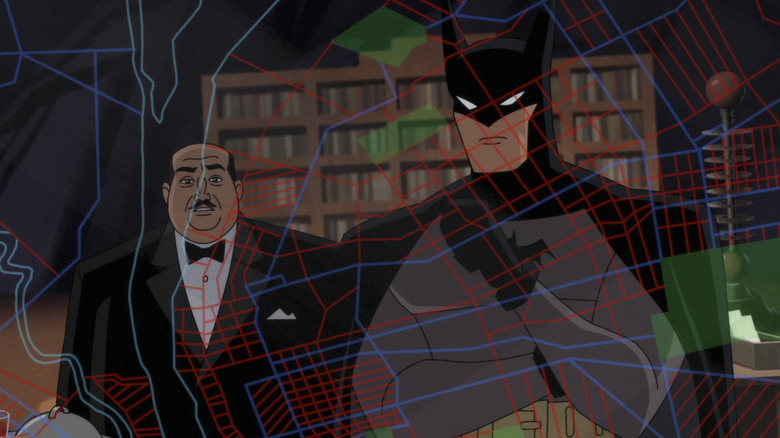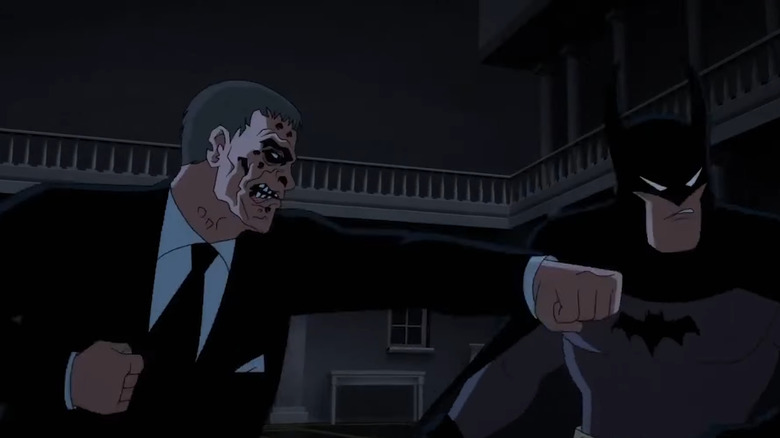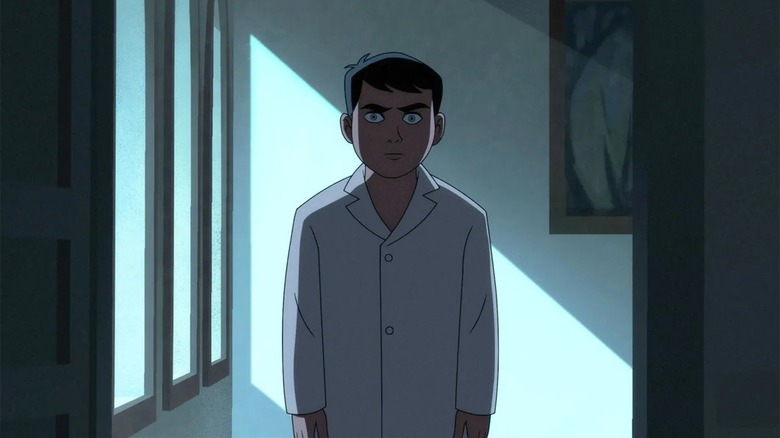This article contains spoiler for “Batman: Caped Crusader”.
“Batman: Caped Crusader” had a lot to live up to, because the legacy of “Batman: The Animated Series” surpassed every single DC animation project in the last 30 years. Thankfully, Bruce Timm has done it again and not only delivered a worthy spiritual successor to “The Animated Series,” but also the scariest and most mature Batman story in years with “Caped Crusader.”
The series offers a fantastic portrayal of Gotham City and the crime that surrounds it, recalling the genius of Gotham Central at times. It features exquisite animation by Studio IAM and Studio Grida, with production design reminiscent of Batman: The Animated Series, but also stands out as its own take on the Batman mythos.
More than anything, it’s a show that takes the titular Caped Crusader to places we rarely see in animation or live-action adaptations — though the comics are often harsh on that front. We get a scary Bruce Wayne who is genuinely scary as Batman, and a Batman who constantly fails. The latter makes “Batman: The Caped Crusader” a sort of spiritual prequel to Matt Reeves’ “The Batman,” as Bruce is clearly very early in his tenure as the Dark Knight — even earlier than what we see in Reeves’ film.
Batman: Caped Crusader makes Batman fail
Whether it’s a movie or a TV series, live-action or animated, most depictions of Batman portray him as nearly infallible. Whether it’s a seasoned Dark Knight like Batfleck in Batman V Superman, one in his prime like Michael Keaton in Batman, or even a rookie like Battinson in The Batman and Christian Bale in Batman Begins, the character is just too strong and too smart to make many mistakes. Sure, Battinson was incredibly bad at Spanish and he took a terrible hit on a bridge with his Bat-wingsuit, but he was still a terrifyingly big threat to criminals.
The Batman of Caped Crusader is different. From the moment we first meet Bruce Wayne, he’s a wreck. He fails at every opportunity he gets, perhaps most seriously when he plays a major role in turning his best friend Harvey Dent into the supervillain Two-Face. But even before that, he’s constantly getting beaten up and overpowered by villains, and at the end of many episodes, he admits he’s only made things worse. Additionally, this Batman is an absolutely horrible person to Alfred, disrespecting him, treating him like scum, and always calling him Pennyworth.
Something clever that Bruce Timm does in Caped Crusader is the idea that Bruce became Batman as a child and only learned to be human later in life. He often takes on the role of Batman when he’s around civilians – like when he threatens Harvey with his Batman voice and almost gives away his secret in the process – he doesn’t believe he has friends or anyone he cares about at all.
Batman: The Caped Crusader scares Bruce Wayne
Speaking of the lack of separation between Bruce and Batman, in the third episode of the season we witness what is arguably the scariest scene in a Batman title – and Batman has nothing to do with it. In flashbacks of Bruce after his parents are gunned down, we see Bruce unable to sleep due to the trauma of his parents’ murder. In the middle of the night, the young boy Alfred, who is now the closest thing to family to him, approaches. Bruce stands completely still and surrounded by darkness at his butler’s open door and wakes Alfred after saying, “They’re going to pay for this.” When Alfred asks who, Bruce replies, “Everyone. I’m going to make them pay for this. And you’re going to help me.”
These are not the actions of a young boy who sees his butler as a friend and confidant, but rather the Batman equivalent of Eren Yeager declaring in Attack on Titan that he will wipe out all of humanity. He essentially holds Alfred hostage and forces him to obey Bruce’s orders for the rest of his life, whether he agrees with his methods or not. Not only is the scene the scariest Bruce Wayne has ever experienced, but it also gets to the heart of Caped Crusader by showing that Bruce Wayne died alongside his parents and that from Crime Alley came Batman, a monster dedicated to fighting other monsters.
The horror inspirations of “Caped Crusader” don’t stop there. Clayface is clearly modeled after Boris Karloff, and the cartoon also features some rare supernatural elements that we don’t often see in Batman adaptations. Unlike in “The Animated Series,” they aren’t explained away using scientific means, but are instead directly seen as supernatural, from ghosts to vampires. This is a new Batman for a new era.




